
 |
Travel Buddies | Friends |
Zrenjanin – Serbiaߴs Most Hipster City
In my view, Zrenjanin is one of the most underrated cities in the northern Balkans, with a truly unique atmosphere. I arrived here in September, on a cloudy day, by a bus from Novi Sad. I got off at a stop near the center and found myself in a small Serbian town with low, shabby buildings. At first, it seemed like the whole city would look like this, but the walk brought many surprises.
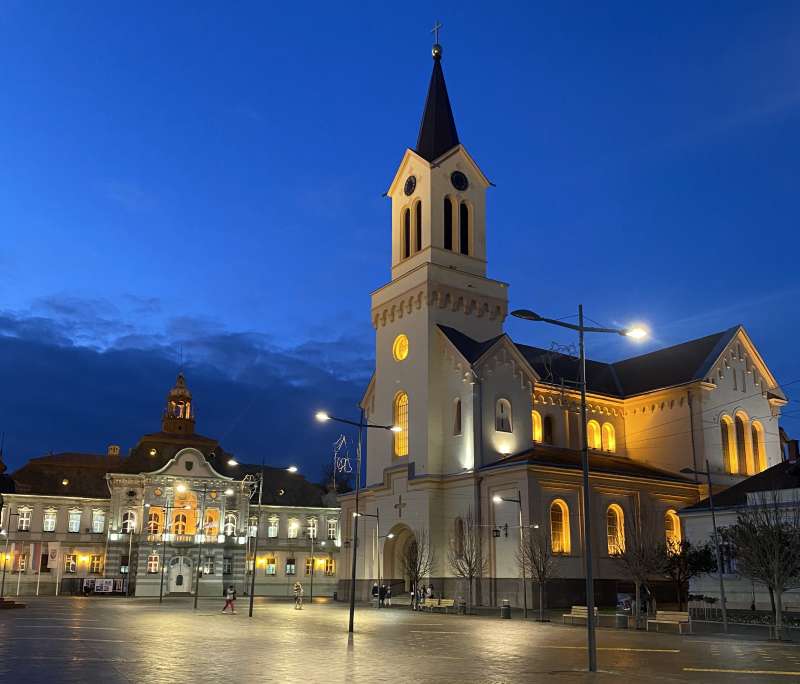
Soon I was standing on the main square, facing a stunning baroque town hall and a strict Catholic cathedral – together they make up that famous postcard view of Zrenjanin. This contrast – baroque glitter next to straight-edged modesty – is the key to understanding a city where balanced combinations of opposites meet you on every corner. To prove it, let us just turn around 180 degrees right there on the square, and weߴll see a rectangular socialist tower block instantly moving us from the 19th to the 20th century. Maybe I was too quick to call it a harmony? Hmm… but letߴs keep going. Art Nouveau in Zrenjanin, or SecessionThe main reason I went to Zrenjanin wasnߴt the postcard square – it was Art Nouveau, or as it was called in Austria-Hungary, Secession.
So, Zrenjanin, back then a decent-sized town in Hungarian lands, ended up with a few modernist treasures. 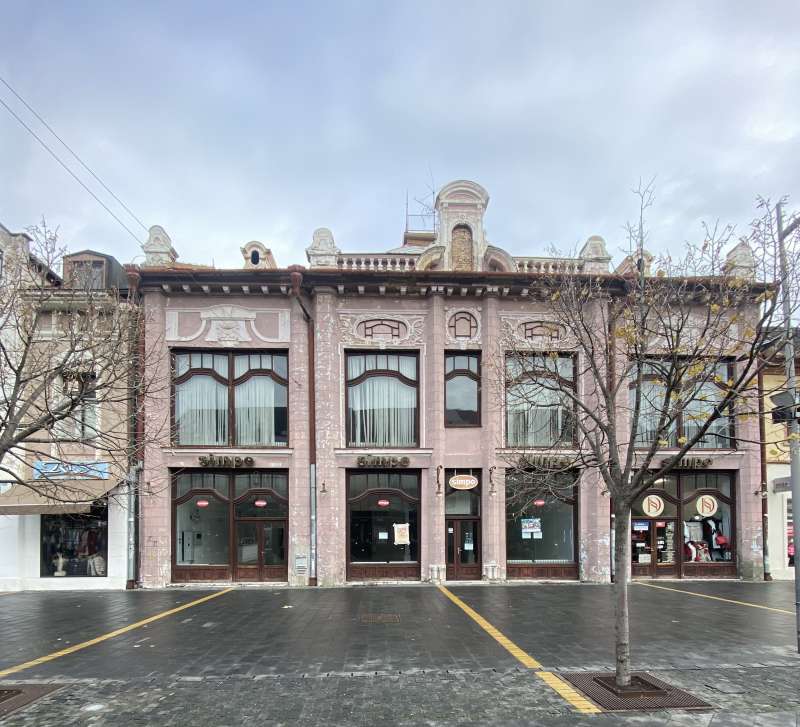
The Bence HouseThis gem is located at 21 King Alexander I Street. When I visited, in autumn 2024, the house was empty. There were traces of an old shop on the ground floor, and the attic window was bricked up, which gave me a rather sad impression. But… not entirely sad. The light decorative forms and huge windows still reminded me of a wealthy past – something that is reflected in many other Zrenjanin buildings. 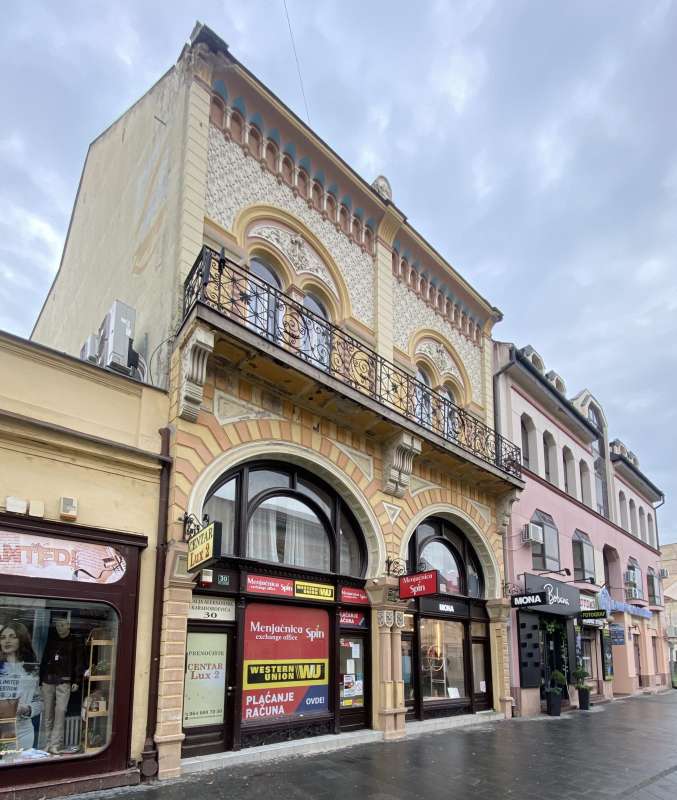
House 30 on King Alexander I StreetWalking along the pedestrian street, I came across a gorgeous building with oriental vibes. The facade has been restored, but Zrenjanin wouldnߴt be Zrenjanin if things were that simple. Looks like the shop owners on the ground floor funded the renovation, and in return plastered almost every inch of the facade with their posters. The Eiffel BridgeThe famous creator of the Paris tower also built a bridge in Zrenjanin in the early 20th century, also an iron one. Some say it still exists, that itߴs the old iron bridge in the city center. But, itߴs not. That bridge is called the Little Bridge, and weߴll get there later. The Eiffel Bridge stood on the place where the modern pedestrian bridge is now located – the Pešački most. The street is especially narrow here, and the beautiful iron bridge of the famous Frenchman didnߴt quite fit, so the socialist Yugoslavia authorities replaced it with a more practical concrete one. Sad? Yes. But… not entirely sad. Because this bridge leads us to another modernist masterpiece – the old brewery. 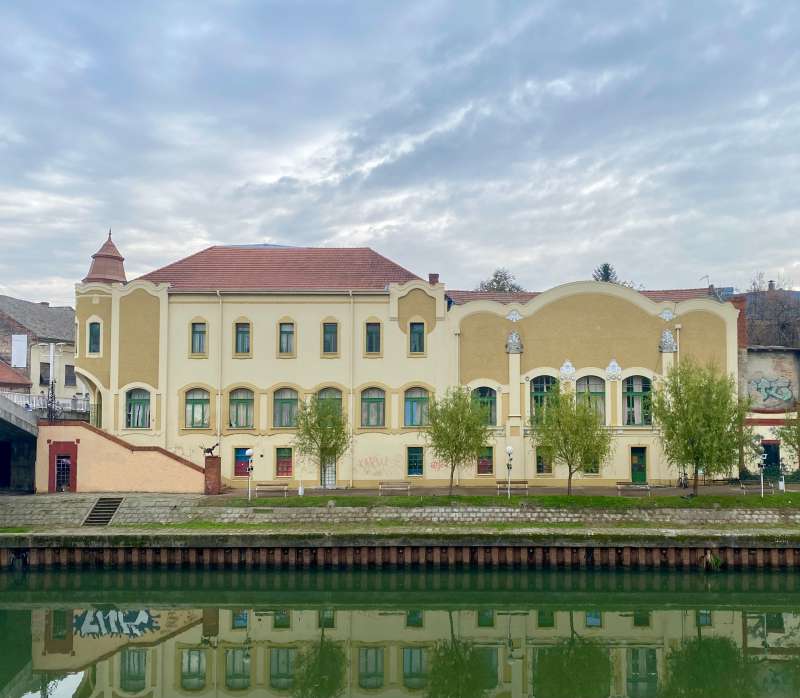
The Dunđerski Palace, or the Old BreweryLook at that facade – itߴs shaped like a beer container! A mug or a brewing tank. Or maybe thatߴs my imagination, and I need to drink less. Sadly, they no longer brew beer here, but thereߴs a hipster bar operating in one of the rooms. The whole building looks like the perfect place for that kind of thing: you could open a cultural center or a concert hall here, the potential is huge! The building is so huge that it doesnߴt even have a number, Google Maps just says Žitni trg bb, which means “bez broja” – without number. The River BegejIߴm walking along the river, and the city slightly changes. Iߴm still in the center, but itߴs more quiet here, with hardly any buildings – a vast grass-covered area with only a small neighborhood of private houses nearby. Not far from here, at the corner of Jevrejska and Sarajlijina streets, stood a beautiful synagogue, destroyed by the Nazis during World War II. Just listen to the names of the streets – they clearly reflect the diversity of the Balkans. Jewish, Turkish, Hungarian, Austrian, and of course Serbian names all come together to create a very unique atmosphere. 
The Little Bridge in Zrenjanin We continue along the river and reach the Little Bridge that I mentioned earlier. Across the river, next to the music academy, thereߴs a beautiful view of the bridge, as well as the court house, and the white church. If you listen carefully, you can hear singing and piano music from the academy, and it feels like youߴre back in the old Austro-Hungarian times. 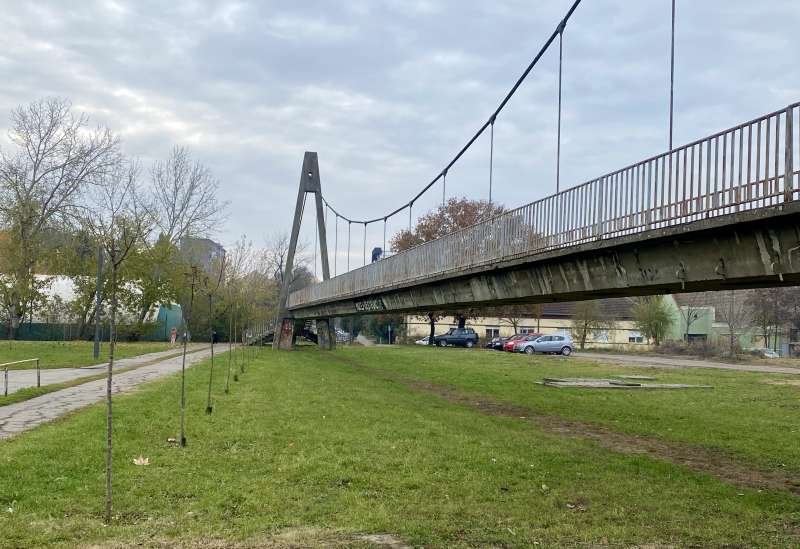
The Dry BridgeWeߴre in Zrenjanin, so itߴs time for another dose of eclecticism. Walking past the new town hall, we enter the cozy old neighborhood called Little America. In this part of town, the river used to branch out and form a small island, so, during the socialist time they built a bridge here, but the river soon dried out, and about 20 years later was filled with earth. Now the bridge proudly stands in the middle of a cute green lawn. Someone cleverly wrote on the bridge: Muzej Destrukcije. Well, itߴs hard to come up with a more concise and understandable way to describe this monument for any tourist. Sokol HouseHeading back to the center via Narodnog Fronta street, you canߴt miss the stunning 1920s building with giant athletes on the roof, holding spears and shields. Itߴs the Sokol House, home to a local sports club. An interesting mix of brutalism and Art Deco.
All over the city you can find gorgeous baroque mansions with creepy grey sheds attached to them, this contrast is everywhere. So why is Zrenjanin so full of contrasts?The answer is in its name. Since the Middle Ages, the city has been called Bečkerek, named after a Hungarian family. After World War I, the newly independent Kingdom of Yugoslavia renamed it Petrovgrad, to minimize the imperial tone. After World War II, the city was renamed Zrenjanin, in honor of the Serbian partisan Žarko Zrenjanin, who fought fascists during the war. With each name change, the cityߴs fate changed too. Under Austro-Hungarian rule, it was a significant regional center with wealthy estates, an Eiffel bridge, and experimental Art-Nouveau buildings. In Yugoslav times, people started moving to Novi Sad or the capital for work, and cities like Zrenjanin emptied out. And yet, it doesnߴt feel like Zrenjanin is stuck in the past. Thereߴs a lot of potential here. The cityߴs contrasts could be used to create something special – a unique atmosphere, a cultural hub, a trendy, exciting place. Letߴs hope that happens. 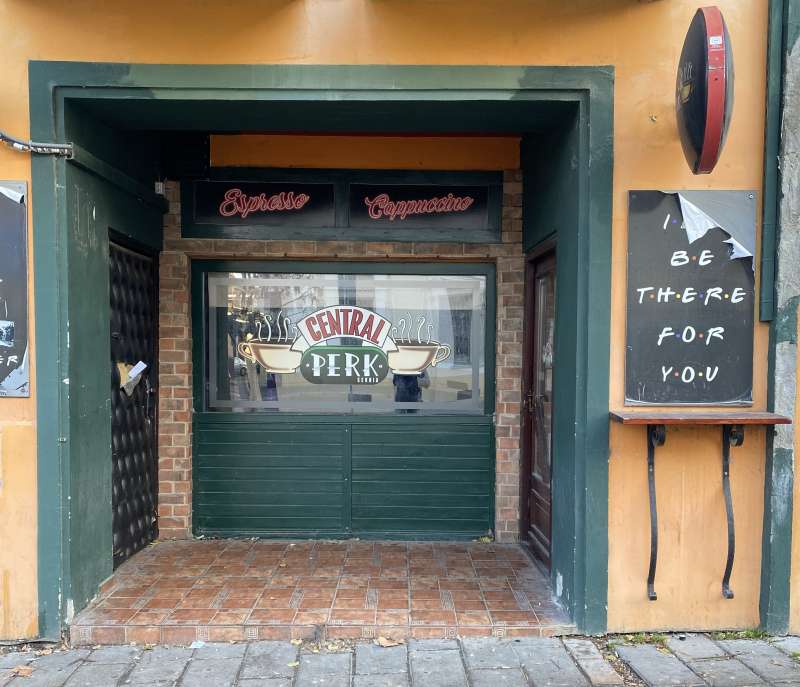
Friends cafe in Zrenjanin And as the cherry on top, hereߴs a café called Friends. Yes, with that couch, just like itߴs straight from the set. Or maybe they did film it there? Close
|
| © 2025 Mahnem |
Feedback Terms and Conditions Privacy Policy |
 |